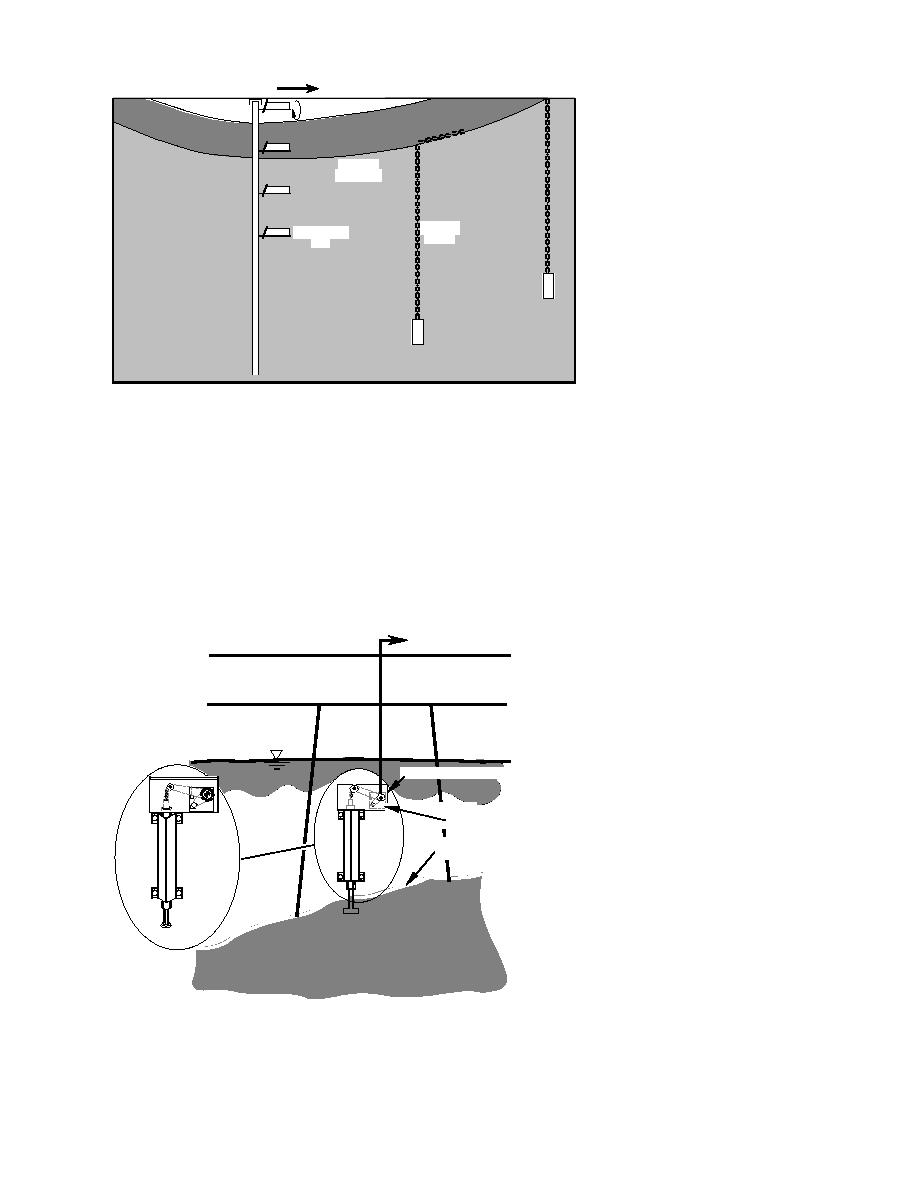
Flow
Redeposited
Initial Riverbed
Material
Bottom of
Scour Hole
Sediment
Instrumented
Chains
Fish
Figure 12. Instrumented fish
and sediment chains.
fall of the hydrograph, sediment is re-deposited,
continuous. Several approaches being evaluated
include capacitance, magnetic, sonic or closely
the fish is re-buried, and the transmitter returns
spaced point measurements. The difficulty is that
to a slower pulse rate. The resolution of the ero-
these systems typically use an instrumentation
sion rate and volume is a function of the trans-
wire that is vulnerable to damage from moving
mitter spacing, which is controlled by the physi-
ice and debris.
cal size of the transmitter.
Commercially available continuously active
Coarse discrete monitoring is acceptable where
scour monitors will also be evaluated. One
the active scour layer is significant, e.g., around
commercially available monitor, which attaches to
bridge piers. Where the erosion layer is thin, as
an existing structure, is a Brisco scour monitor.
the case for general bed or channel constriction,
The monitor uses a dropping foot resting on the
resolution of the bed elevation has to be nearly
bed, adjacent to the pier. The elevation
of the foot or depth of scour is moni-
To Remote Readout
tored via a readout unit on the bridge
abutment (Fig. 13). One disadvantage
of this approach is the need to attach
the device to the structure. Hence, the
system can only monitor scour adjacent
to the structure, and typically the criti-
cal element is the footing some distance
Mechanical Protection Box
away from the structure. Also, the need
to manually reposition the foot limits
Encoder
the application to monitoring the maxi-
Box
mum depth of scour per event.
Redeposited
Sediment
Passive scour chains (Fig. 12) are
often used alone or in conjunction with
the active scour systems to establish
the total depth of scour. As the soil is
eroded, the exposed chains will lie on
the bottom and are reburied during
sedimentation. When the chains are
recovered during low water, the pro-
file of the scour hole and the amount
of redeposition can be defined.
Figure 13. Typical Brisco scour monitor installation.
9



 Previous Page
Previous Page
